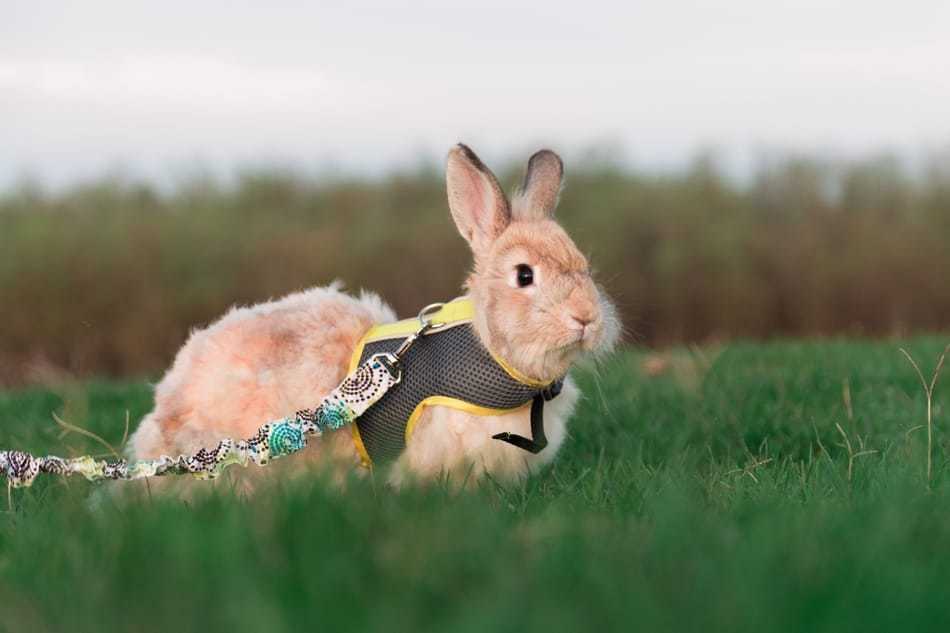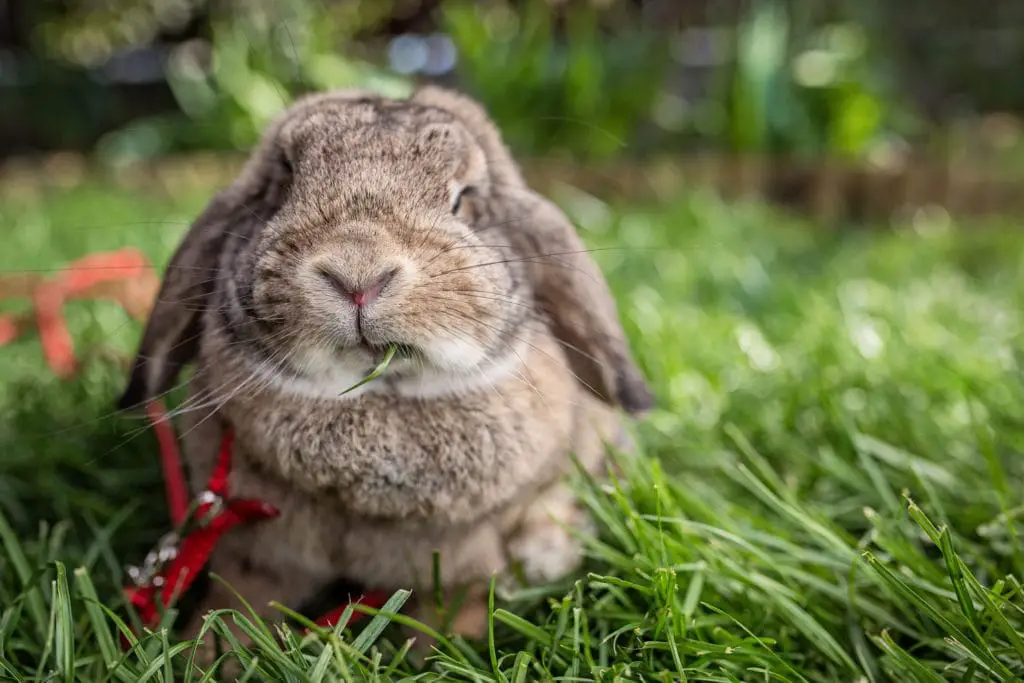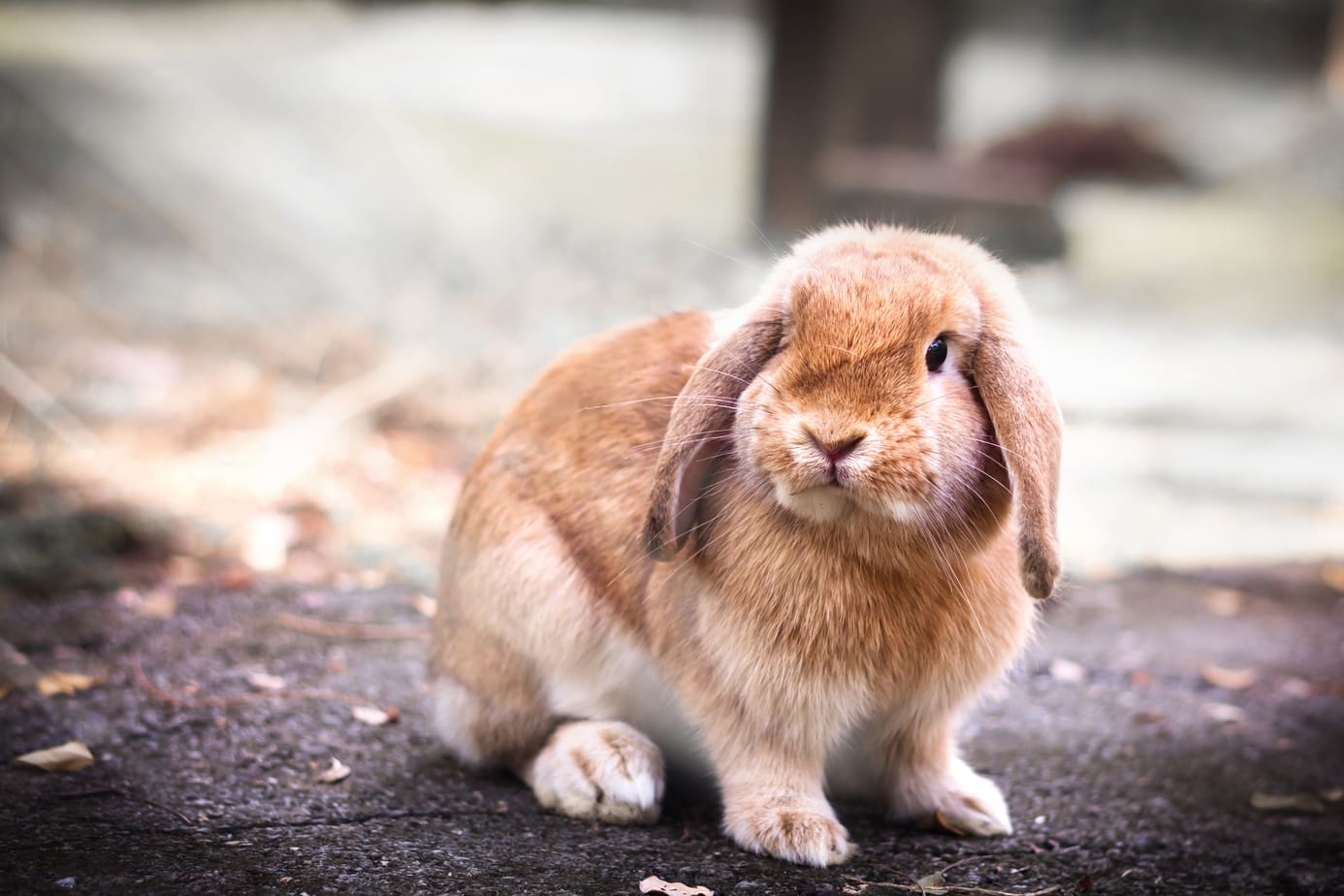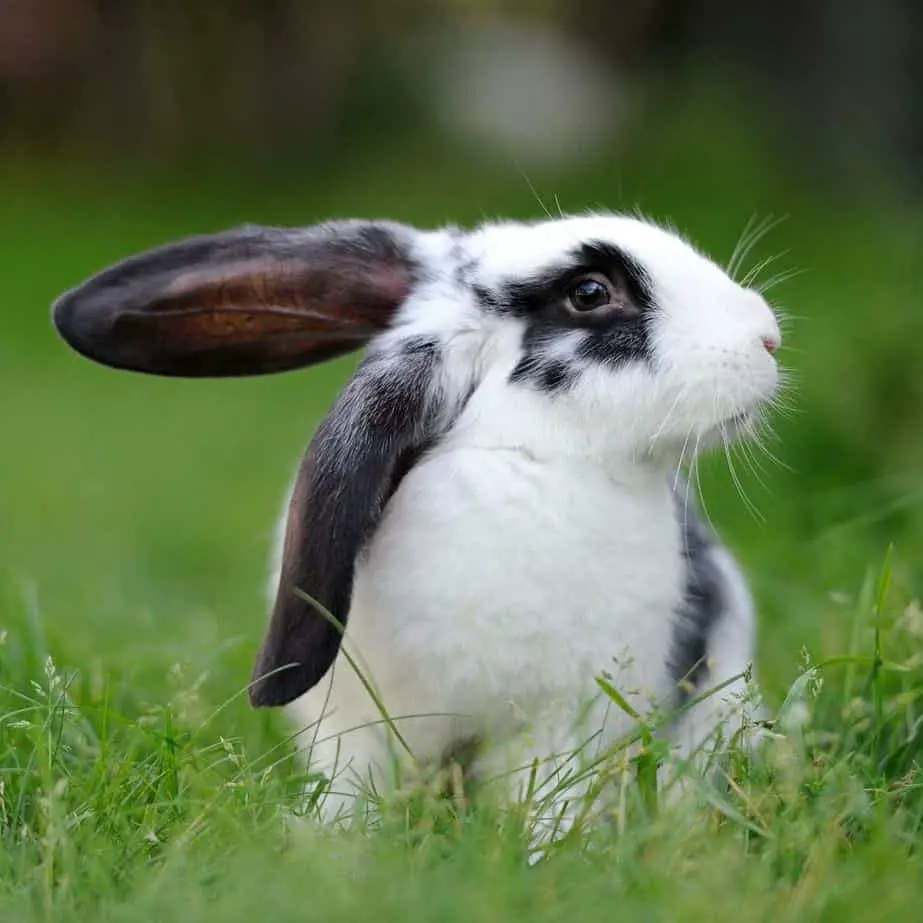
We all want to be engaged in our pet’s lives because we love them! We want to make sure to spend time with them and take walks with them to connect, which usually requires the use of a collar or harness. With rabbits, this can be very uncomfortable and claustrophobic for them.
Rabbits should not wear a harness all the time. Wearing a harness should be reserved for training purposes, and should only last for a brief amount of time. Rabbits will be more comfortable and willing to wear their harness if they are trained in and introduced to it beforehand
All of us have to remember that rabbits are free-roaming animals that need independence. The harness will not be natural for them whatsoever.
Harness Training

This process will be very frustrating for you and your rabbit. But, as you respect and listen to how your rabbit is acting, it will be effective. Make sure that you have the right sized harness and make it to where you can fit two fingers between the harness and rabbit easily to give them space to breathe.
Patience
With the harness being unnatural for the rabbit, it will take a while for it to be comfortable in the harness. It will be on the rabbit’s own time. For us humans, this is very frustrating, but we need to put our own objective aside for the rabbit’s sense of safety.
Introduce Your Rabbit to the Harness
With rabbits being naturally timid and skittish animals, introductions are essential for them. Whenever you start the training, just place the harness in the middle of the room and let the rabbit introduce itself to it. If it wants to play with the harness, that’s a good sign. If it rejects the harness, a possible solution is to spray the harness lightly with an inviting scent.
Convincing Your Rabbit to Wear the Harness

This will be the most annoying and frustrating part of the whole process. Rabbits want to feel comfortable, so having something new and uncomfortable being put on them isn’t ideal. Have their favorite treat with you and give it to them as you’re putting on the harness, and leave it on for about 20 minutes.
When you get the harness on the rabbit, do not try to immediately walk it. Give it about a week to get used to the harness and accept it. If it is chewing and struggling with the harness after a couple of days, ditch the harness. But, if the rabbit accepts it, allow your rabbit to roam around in the harness to get a good feel for it.
Walking Your Rabbit Indoors
Once the rabbit has accepted the harness, it’s time to go for little walks. Make sure to walk indoors ONLY for the first couple of times. Take it to places indoors where it’s comfortable enough to have a positive association with the harness and walking. When on a walk, give the gentlest tugs possible. The rabbit’s bones are very fragile, so a strong tug could inadvertently injure him/her.
Upgrade
When the rabbit has gotten comfortable enough with the harness and lead indoors, after about a week, it’s time to upgrade to walking outside.
What Harness Should I Get?
Before we should even think about getting your rabbit into a harness, you need to know what kind of harness you should get for your rabbit. This can be a very frustrating process because if your rabbit does not like it, it won’t wear it. Rabbits are very particular about what they do and do not like. So, get a harness that is adjustable at the stomach and chest, easy to control with an elastic leash, made with durable mesh, secured by velcro, and soft and comfortable for your rabbit to wear.
If you want specific suggestions on various products you should get your pet rabbit, take a look at my checklist here: Checklist: What You Need to Buy For a New Pet Rabbit. I put a ton of money into products that just don’t work well, but you don’t need to. If you follow that list you should be off to a great start.
Walking Your Rabbit
When walking your rabbit, make sure you are in a safe place where no danger is prominent. Have it be a spacious field where no other animals are present and you can easily see what’s around you. Never take your rabbit walking in the street. There are way too many things that will scare the rabbit and it will easily get spooked, which is just a no-good situation for you both.
Always remember that rabbits have many natural predators and get spooked easily. To be prepared for this, always keep a loose grip on the lead, so that when something spooks it, it won’t hurt itself by taking off on a firmly grasped lead.
How Often Should You Put the Harness on Your Rabbit?

You should ONLY have your rabbit in a harness whenever it is time for training or walking time. Other than that, let your rabbit roam free and independently.
Are Collars Okay?
Collars and harnesses usually go hand in hand together. Usually, you will not have a harness without a collar. With that being said, are collars okay to put on your rabbit? Yes, collars are okay to put on your rabbit. It is not ideal to put one on your rabbit, but you can! With the situation not being ideal though, here are some tips to help you with getting your rabbit a collar.
- Never force your rabbit to wear a collar.
- Have it loose enough for them to still breathe, but not loose enough to where they will slip out of it.
- Never jerk the leash for the collar. Rabbits have very delicate bones.
Make sure the leash is extendible and loose, mostly because they are very skittish and will bolt away at any moment
Pay Attention to Their Mood
One of the most important and respectful things you can do for your rabbit is to be observant of their mood. If the rabbit is biting at and trying to take the harness off, take it off. If the rabbit won’t move when you put the leash on it, don’t force it to move.
If you want some specific behaviors to look for in your rabbit, and what they mean as far as their happiness, take a look at my list of behavior examples and what they mean here: Rabbit Language: 27 Ways Bunnies Communicate. Learning how to read the signals your rabbit is giving off is probably the most helpful thing you can learn as a rabbit owner (it took me years to figure it out).
When it really comes down to it, you need to have what your rabbit might be feeling at the forefront of your mind. Be observant and respectful of your rabbit’s personal space.
How to Make Training Easier
- Rabbit Only Comes for Food? Six Better Ways to Bond – The one thing you can do that will make the biggest difference in the behavior and trainability in your rabbit, is to simple develop a stronger bond. Every direction you give, and behavior you try to influence in your rabbit will have so much more weight if you are bonded closely with your rabbit. This article shows you some simple and effective ways to do this!
